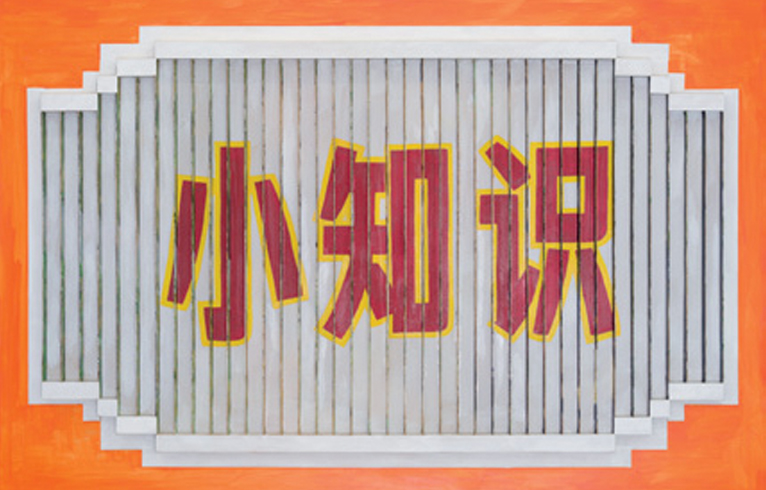WANG WEI: PROPAGANDA PAVILION
| December 7, 2011 | Post In LEAP 11

Propaganda is a one-way affair. It is a device, a prop, controlled by the powerful to dictate to the weak. Do this. Believe that. For it to be successful, there can be no talk back. But what if propaganda were a tool of self-reflection? What shape would it take? What if, when you looked into propaganda, you could see yourself staring back?
“Propaganda Pavilion,” Wang Wei’s recent solo outing at Boers-Li Gallery, was just that. The exhibition consisted of just two works. The first is Helpful Hints, an acrylic painting that depicts a fierce tiger from one angle, the Chinese characters xiao zhishi (literally “small knowledge,” translated as “helpful hints”) from another, and red pandas from a third. They are images that could easily have been pulled from the exhibition’s eponymous centerpiece, Propaganda Pavilion, a full-size replica of an information stand at the Beijing Zoo. But unlike the original, which displays information about the animals kept in nearby cages, Wang Wei’s stand is covered entirely in mirrors, and the only information it provides comes in the reflection of its surroundings.
The xuanchuan lan, literally a “propaganda board,” is variously translated as “bulletin board,” “billboard,” and by the gallery— somewhat divergently— as “propaganda pavilion,” although perhaps “pavilion” adequately communicates the focal role the xuanchuan lan played in residential communities built around socialist danwei (work units). What it offered was a powerful precipitate, as public spaces were created around the board to negotiate declarations of the political. But today, the battle over that political space continues on elsewhere. Today, when data can be touched and innovation is scaled to fit the hand, the socialist bulletin board is a relic, side-stepped in favor of newer media and messages. It is a technological dinosaur, as much a curiosity as the miserable animals on display at the zoo.
This is not the first time Wang Wei has turned to the Beijing Zoo for source material. In 2009, tile mosaics based upon those found in enclosures around the zoo covered the walls of the China Art Archives and Warehouse; Natural History I and Natural History II were prosaic installations depicting seagulls and geometric patterns in the distinct color palette of a bygone era. The Beijing Zoo is a signifier, not only of childhood and nostalgia— any adult born and raised in Beijing remembers weekend excursions there— but of a different time and a different order, at once more and less innocent than the present.
“Propaganda Pavilion” has particular resonance with Wang Wei’s underlying concern with space, particularly as a container for ideology. To that effect, the artist has been especially interested in spaces that are useless, for what they say about power. In 2003, Wang Wei constructed and then destroyed a brick building without doors and windows inside of Long March Space (“Temporary Space”); futility itself was the point, as a social comment on what it meant to create in the greater context of that time and place (the early 2000s, Mainland China; the work remains relevant today). “Historic Residence,” at Space Station in 2009, recreated the bathroom once used by an early Communist leader, now preserved as a “historic residence,” asking which marks— of history, of hagiography, of power— the space bore in the absence of function.
So too has his propaganda pavilion been stripped of its original purpose, emptied of the information that justifies its presence. Yet its form bears traces of the ideologies that once marked it and the institution it belongs to, all but forgotten in the charge ahead. That history, Wang Wei argues, is not dead. If you look back to those forms, those times, and the words and thoughts that marked them, you will find that you were always there, that your presence inhabits the historical moment as easily as reflection haunts the mirror. Angie Baecker


